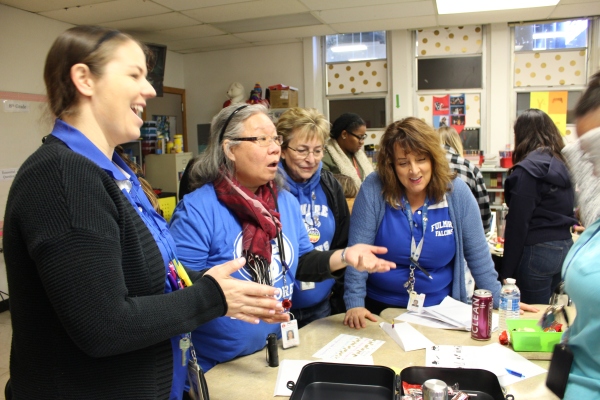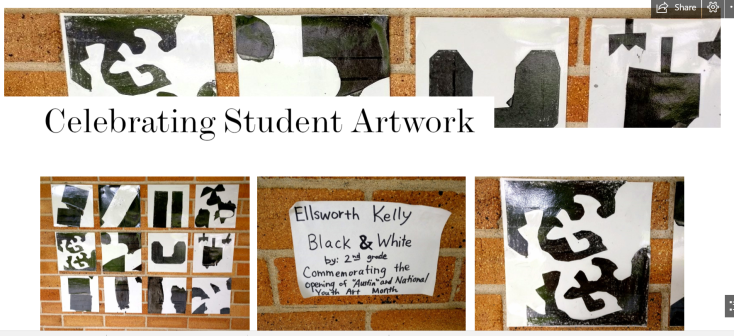I’m writing as a parent at Becker Elementary School in Austin Independent School District. And I am cross-posting here as an advocate for all of our sister schools in our vertical team, our district, our state, and our country.
Some of our new and returning families may not know that twelve years ago, Becker’s enrollment was 189 students and we were under threat of closure. To increase enrollment, we asked prospective families, “What do you want from your neighborhood school?” and a partnership grew between parents and school to create what we seek: a joyous, inclusive, and bilingual community for our students and families.
This year, we are full and currently have 500 students enrolled, a threshold we have been working toward for years, affording us a full time assistant principal.
I speak of “our” school and “our” work because hundreds of individuals– educators and families–share responsibility in bringing our school to where it is today and in how it will look tomorrow. Here is a video I love and that, in rewatching it and reminiscing, moved me to write down my thoughts today.
On the spring day featured here, the Statesman captured just one of many beautiful moments Becker students, staff, and families have shared in solidarity and advocacy over the years. I feel lucky to have witnessed this one.
The students in this video are now adults. I think about how our school has changed, and it weighs heavily on me that, unintentionally, through focusing on attracting new families, some of the work we have done marginalized the voices of the families who have loved and attended Becker for decades. In the current context of the Black Lives Matter Movement and a pandemic that disproportionately affects underprivileged communities, it is important for us to know that, as a good friend recently reminded me, in putting forth good intentions, we must consider their impact. Good intentions often perpetuate inequity.
I have been hesitant to write these days, as a white woman, not knowing when to speak and when to listen. When I rewatched this video, I had to write.
At this time many of us are making decisions about what the fall will look like for our families, for our children. I know that some of us have more decisions to make because we have more options. I know that, for some of us, the option to unenroll or to enroll elsewhere may seem like the only option. We have good intentions. We need to work. We want to keep our families and children safe. We may even plan to return to our public school one day.
But let us not make these decisions without seriously considering their impact.
Enrollment impacts our school’s funding. When enrollment drops, our schools will lose the teachers who have been helping to raise our children. In a normal school year, the first step is “leveling”. A week or two into the school year, enrollment causes a shift in teachers around the district. Teachers whose classes didn’t make minimum enrollment numbers will be transferred to other school communities. They will not get to choose where they go. Returning to Becker depends upon an available space the next year and a new interview process. And returning is unlikely (I’ve never seen it happen) because transferring schools is incredibly stressful for teachers as they need to get to know a whole new community and school climate, not to mention move a classroom-full of personal materials. It’s like moving your family to a new city. If enrollment levels throughout the district drop significantly, there will be reductions in force. Over the last few years, Becker advocacy and enrollment committees have worked tirelessly to raise enrollment from 485 to 500 students to earn a full time assistant principal, which is an enormous help to a campus. If just a few families leave, years of work is lost.
One individual family’s decision does not exist in isolation of the big picture here. Our public schools will suffer when families unenroll.
Let us each ask again, What do we want from our neighborhood school?
Are we looking for a community with shared goals and a commitment to work toward those goals? Do we want our children to have a joyous, inclusive, and bilingual environment to learn and grow? Do we seek a community that holds us accountable for thinking about how our intentions impact our whole community? Do we want to engage in courageous conversations, seeking ways we can work for a more equitable world?
The Becker community will continue to work to bridge communities, to create spaces where every parent has a voice, to align all of our work and initiatives with our shared goals.
The Becker community, under the guidance of professionally trained AISD and campus staff and parents, will guide students to take active part in sustaining a joyous, inclusive, and bilingual school.
And now, in this current reality, knowing how much our school has done for us, we must also ask, What can we do for our neighborhood school?
First, we can stay enrolled, commiting to our shared goals. Soon we will know what the requirement for staying enrolled will be: how many minutes of synchronous learning and how many learning activities submitted, for example. We can meet those requirements.
Then, we can ask, who is represented and who is not? How can we work together to ensure all families have a voice in our community? How can we support each other, love each other, hold each other accountable to the ideals and shared goals we work to uphold?
On that spring day in 2009 our Becker students sang the Beatles’ words:
What do I do when my love is away?
Does it worry you to be alone?
How do I feel by the end of the day?
Are you sad because you’re on your own?
This is an unprecedented time. An uncertain, difficult time. A time when we need our community, and our community needs us. You’re not alone. Together, we’ll get by with a little help from our friends.
Join us in the important, ongoing work of our beloved neighborhood school.









